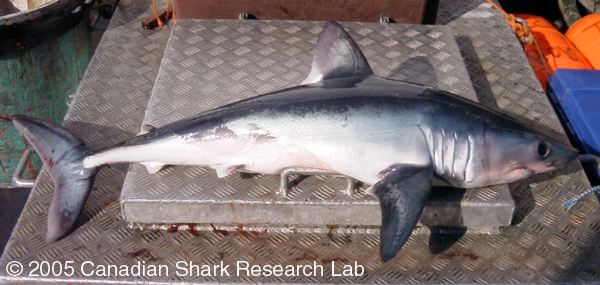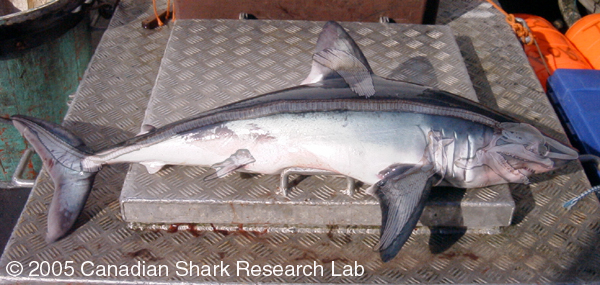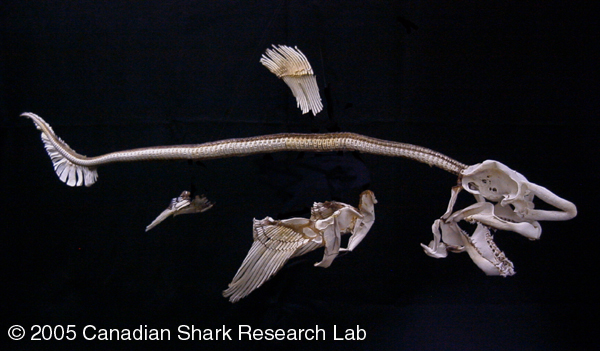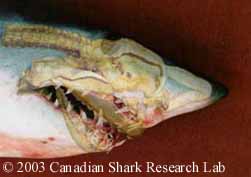Skeleton
Like other fish, sharks possess an internal skeleton. A sharks skeleton differs from that of other fish because it is composed entirely of cartilage. Cartilage is a strong and durable material but also light weight and relatively flexible. These characteristics aid in the general movements of the shark in a variety of ways. For example, cartilage is lighter than bone and helps keep the shark from sinking (since a shark has no swim bladder for buoyancy like other fish) and allows the shark to turn in a tighter radius than other fish. Cartilage found in the jaws and backbones of sharks require more strength then the cartilage found in the fins. These areas are strengthened with calcium salts forming a "calcified cartilage" which has similar strength characteristics of bone without the added weight.
Like the rest of its skeleton, the skull of a shark is made mostly of cartilage. The shape of the skull can be variable, ranging from the classic shape of a porbeagle skull, as seen below, to the broad and flat shape of a hammerhead shark. This picture of the head of a porbeagle shark has a photograph of the skull superimposed on top of it. The cartilage in the rostrum is spongy and flexible, allowing the shark to absorb considerable impact with its nose.
The most variable aspect of a shark skull is the jaw. The jaw can be attached to the cranium in different ways and this is generally related to the method in which the animal feeds. The most common type of jaw found in modern sharks allows the full jaw to swing down and forward in order to swallow larger prey items.




